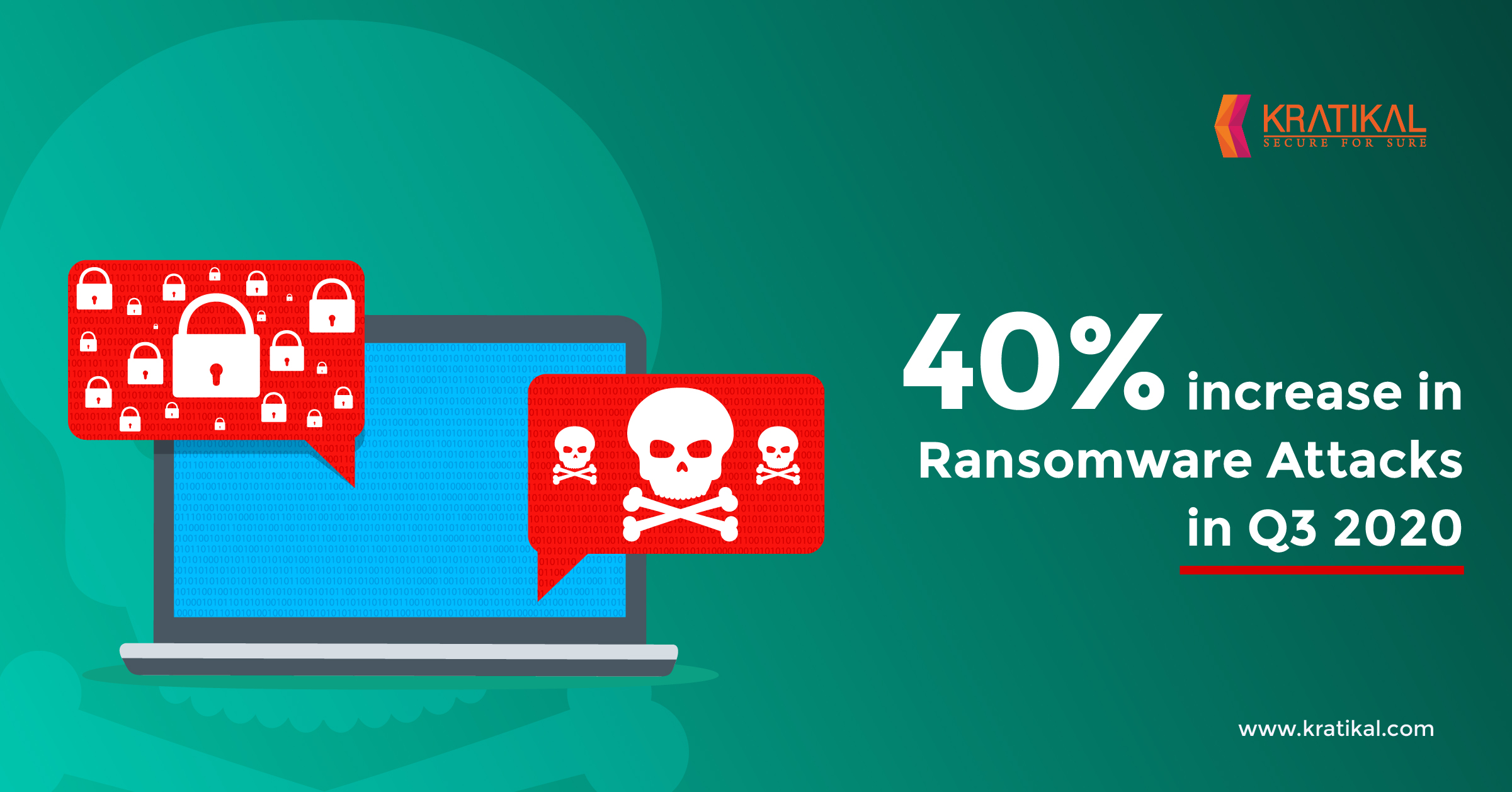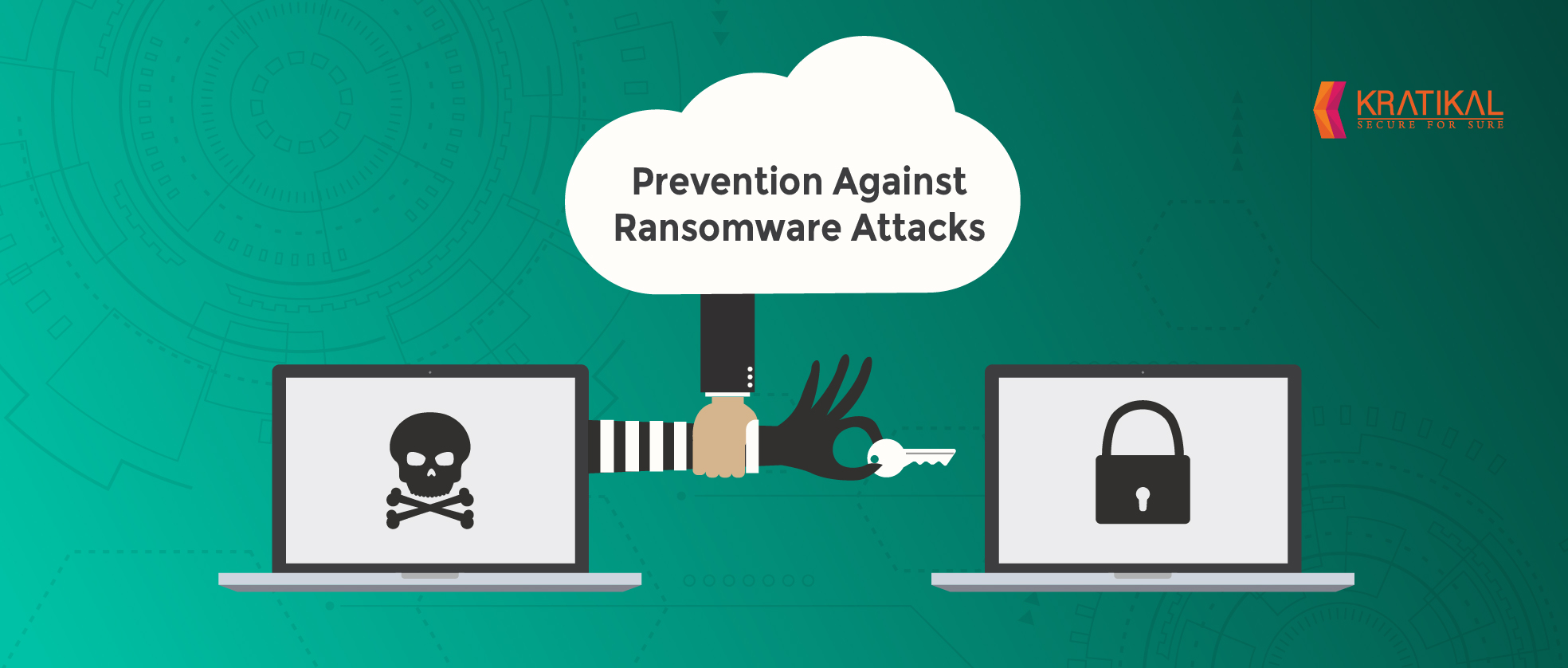

This year cyber attacks have increased many folds as compared to previous years due to new security challenges caused by the Covid-19 pandemic. The third quarter of the year has seen a huge surge in ransomware attacks. Globally, a total of 199.7 million ransomware attacks have been reported in the third quarter of 2020.
According to cyber security experts, ransomware attacks have increased 40% to 199.7 million cases globally in Q3 of this year. Below we have mentioned some staggering statistics which will give you an insight into the present situation:
- The US observed 145.2 million ransomware hits in Q3, which is a 139% year-over-year increase.
- Cyber security researchers have detected new ransomware, Ryuk, with 5,123 attacks in just Q3 2019.
- Ryuk ransomware attacks have increased to 67.3 million in Q3 2020, which is 33.7% of all ransomware attacks this year.
- Though ransomware attacks have gained pace this year, malware attacks have fallen significantly. Cyber security researchers have recorded 4.4 billion malware attacks in a year-over-year comparison through Q3 – a 39% drop worldwide.
- The experts have detected a 30% rise in IoT (Internet of Things) malware attacks with a total figure of 32.4 billion attacks globally.
The above data shows a considerable decrease in malware attacks but that does not imply the disappearance of malware attacks. Because, this is just a recurring downturn that can easily adjust itself in a short amount of time, as per a cyber security report.
Table of Content
The Strategy Behind Ransomware Attacks
Ransomware is a form of malware that is installed into victims’ computers through malicious emails. It encrypts the victims’ data for which victims need the decryption key. The cyber attackers demand ransom, which can range from a few hundred dollars to thousands, payable in Bitcoin, for the decryption key.
There are a number of attack vectors through which ransomware can gain unauthorized access to victims’ databases. One of the most prominent ways used to access victims’ computers is phishing emails and email attachments. Cybercriminals make these emails look trustable and trick the users to open them. Once these emails are opened and attachments are downloaded, the attackers take over the victims’ computers.
Five Protective Actions Against Ransomware Attacks

By following essential preventive measures, you can easily keep the ransomware attacks at bay. All you need to do is to be careful about what you perform on your computer. Let’s walk through some “must follow” cyber security practices:
- Avoid clicking untrustable links: Never click on suspicious or untrustable links, attached in unsolicited emails.
- Build your data backup: Create a separate data backup in an external hard drive that is not connected to your computer, so that you don’t have to pay the ransom if a ransomware attack happens.
- Don’t disclose your personal information: Never disclose your personal information if you receive any call, text, or email which is asking for your personal details like banking information or any account information. Always verify the source of those contacts as cybercriminals steal personal data first to misuse it for malicious campaigns or financial frauds.
- Use content scanning and filtering software: It is advisable to use content scanning and filtering software on your mail server to prevent a ransomware attack. The software helps in reducing the likelihood of a malicious email from reaching your inbox.
- Security awareness program for employees: As an organization, you would always want to secure your confidential data from all types of cyber attacks. Therefore, it is important to conduct a cyber security awareness program among employees that will disseminate detailed knowledge of attack vectors and how to reduce the chances of ransomware attacks.
Turn Your Employees Into A Cyber Threat Shield!
Make your employees proactive against prevailing cyber attacks with ThreatCop!


Hi – do you happen to have Q1 and Q2 numbers for 2020?
Hi Quan, I have emailed you some related information. Hope that helps.
Thank you.